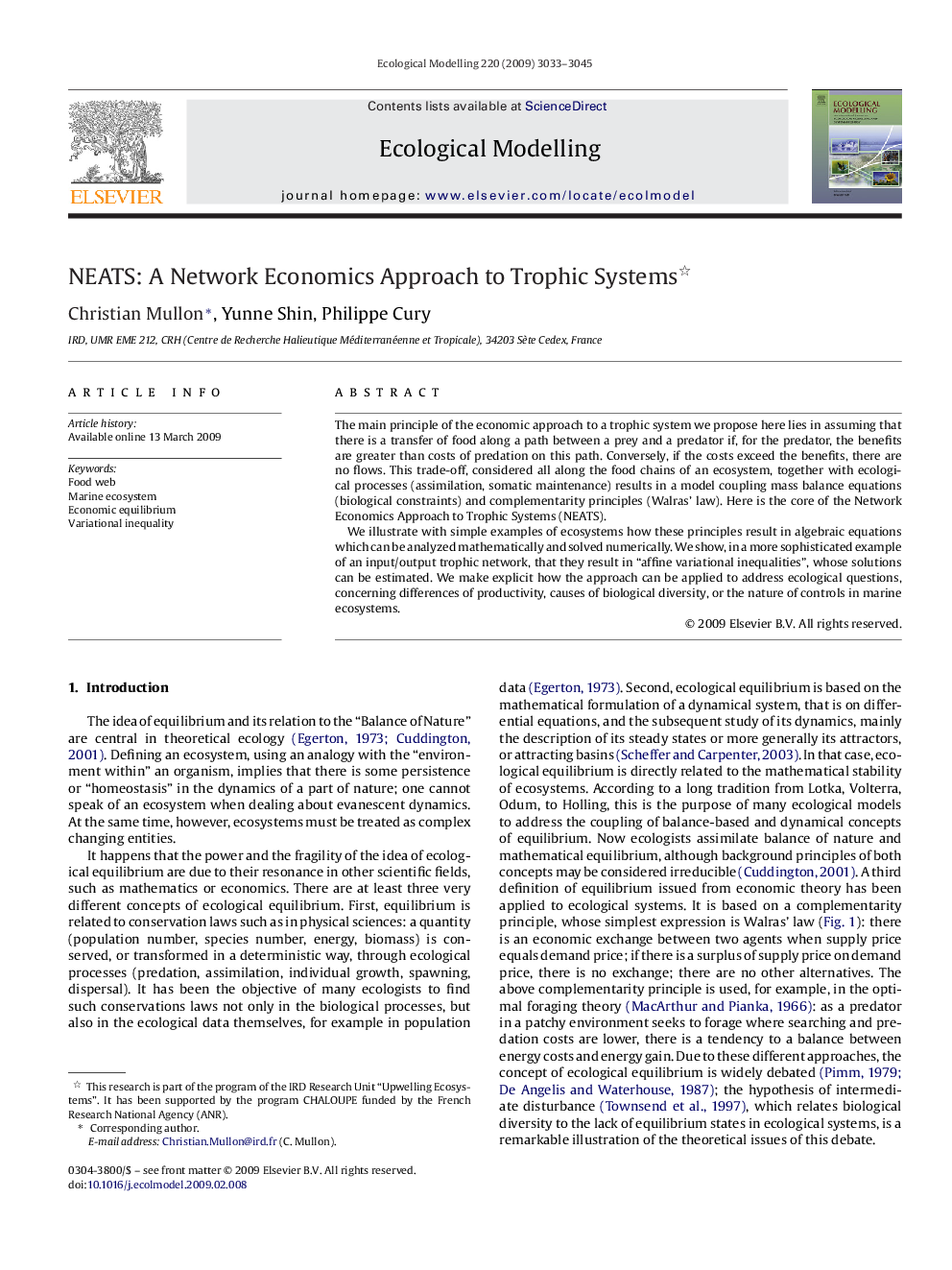| Article ID | Journal | Published Year | Pages | File Type |
|---|---|---|---|---|
| 4377643 | Ecological Modelling | 2009 | 13 Pages |
The main principle of the economic approach to a trophic system we propose here lies in assuming that there is a transfer of food along a path between a prey and a predator if, for the predator, the benefits are greater than costs of predation on this path. Conversely, if the costs exceed the benefits, there are no flows. This trade-off, considered all along the food chains of an ecosystem, together with ecological processes (assimilation, somatic maintenance) results in a model coupling mass balance equations (biological constraints) and complementarity principles (Walras’ law). Here is the core of the Network Economics Approach to Trophic Systems (NEATS).We illustrate with simple examples of ecosystems how these principles result in algebraic equations which can be analyzed mathematically and solved numerically. We show, in a more sophisticated example of an input/output trophic network, that they result in “affine variational inequalities”, whose solutions can be estimated. We make explicit how the approach can be applied to address ecological questions, concerning differences of productivity, causes of biological diversity, or the nature of controls in marine ecosystems.
